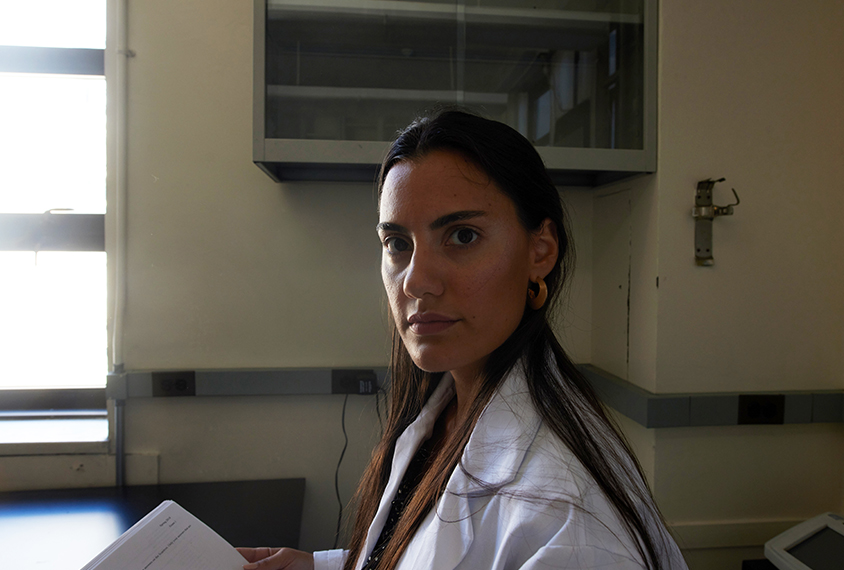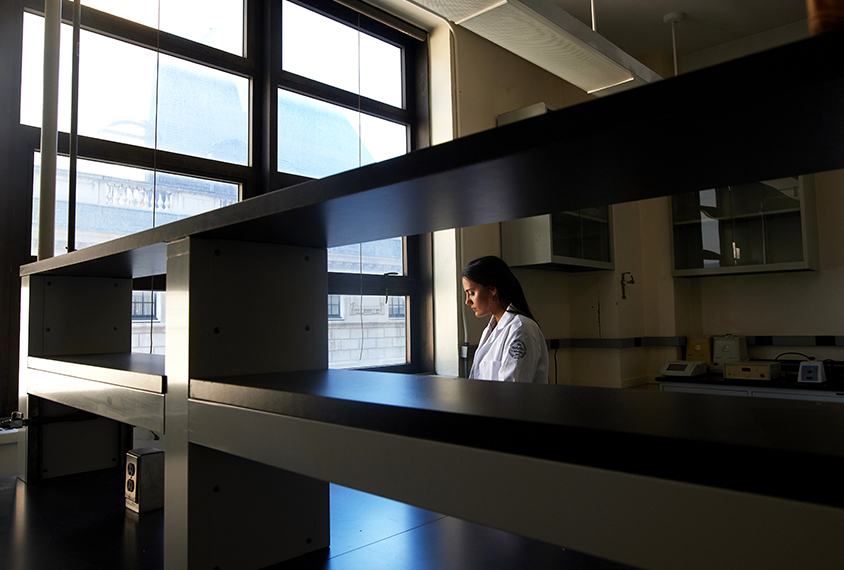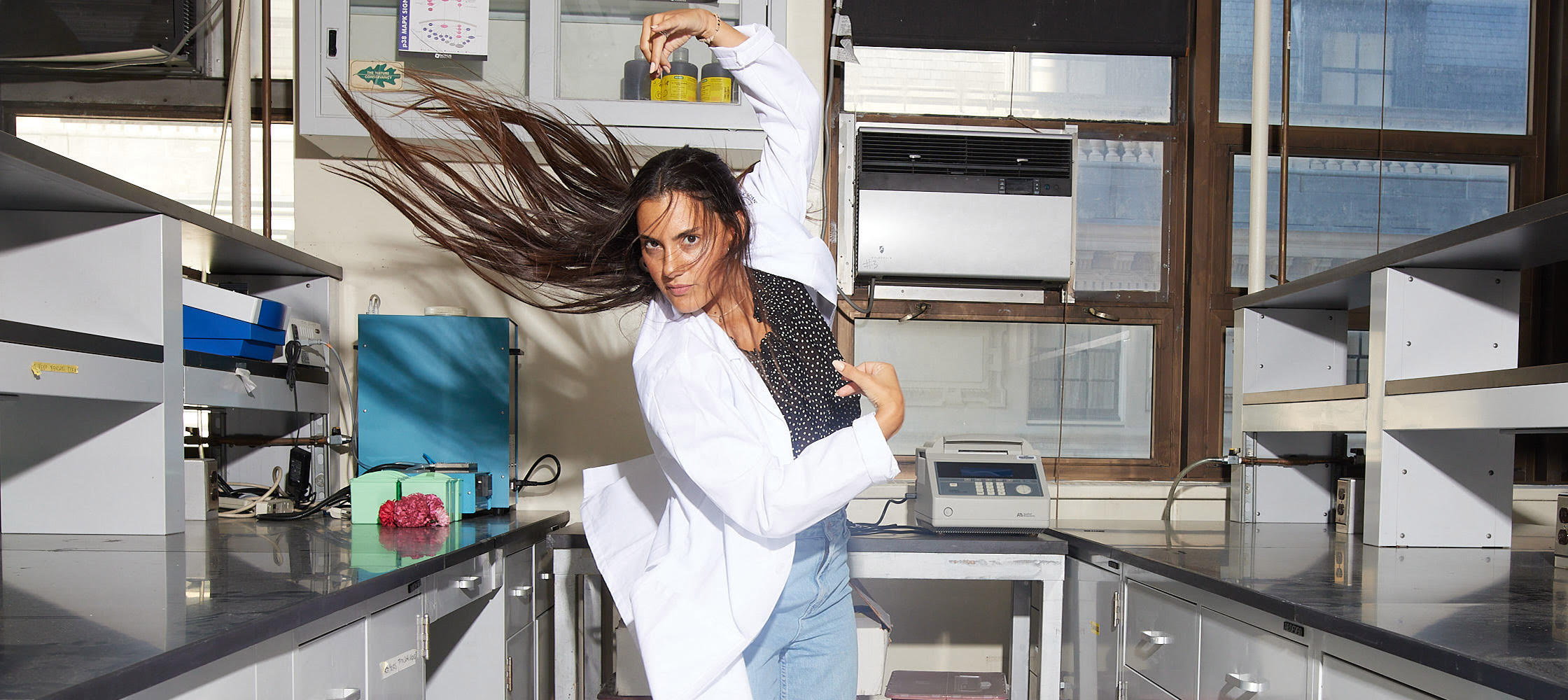At a recent conference at Wolf Trap National Park for the Performing Arts in Vienna, Virginia, Constantina Theofanopoulou found herself bridging two familiar roles — that of a dancer and a neuroscientist.
“It was the first time I danced flamenco for the public after the pandemic or in a neuroscientific setting,” she says of the meeting, which focused on the neurobiology of dance. “Dancing and performing always comes with nerves, but it just felt really good.”
In her academic life too, she is beginning to twirl her two passions together. In 2022, she was named associate research professor at Hunter College of the City University of New York and visiting associate professor at Rockefeller University, where she will co-direct the Neurobiology for Social Communication Lab with Erich Jarvis. Her dual appointment was designed to connect the two institutions to give underrepresented students access to more resources and mentorship opportunities, she says.
As Theofanopoulou continues her studies of the evolution of social communication, she is also a fellow at the Center for Ballet and the Arts at New York University. “We are collaborating on several projects so we can understand more about what’s happening in the brain while we dance, and also how to use dance as a therapy for speech deficits,” she says.
Spectrum caught up with Theofanopoulou to find out how flamenco dancing quickened her academic progress and what’s behind the ‘no fear’ ethos she hopes to cultivate in her new lab.
This interview has been edited for length and clarity.
Spectrum: What big question drives your research?
Constantina Theofanopoulou: A big question that drives my research is how humans evolutionarily became able to communicate in such a complex way. In the past, this question was mostly focused on our ability to speak a language, but now it has become a wider question to include several other ways of sensory-motor communication, such as dance.
S: What does a typical day look like for you?
CT: Well, the new typical days I guess will begin when the new lab starts getting populated with members. Right now, I’m in the process of writing several grant applications. I’m also finishing up several papers. I’m also doing a lot of mentoring to students. A lot of emailing.

S: How much sleep do you typically get?
CT: Eight hours. No more, no less.
S: When and where are you most productive?
CT: At home. Throughout the day, I’m creating good chunks of attention. If it is a chunk that I have designated to write, I will write. And it could be that one day I feel more productive in the morning, and another day that I feel more productive in the evening, but if I designate this time to do it, I will do it very productively.
S: Is there a particular spot at home where you work? What does it look like?
CT: I have my desk in front of two very big windows where I can see outside; there’s plenty of natural light. What I have right in front of me is a piece of art by my sister. I also have my plants right next to the windows, and the chair is the first desk chair I ever bought when I moved to New York. I remember back then it was a great effort of finding something that would be comfortable and, at the same time, as cheap as it could be.
S: What do you eat or drink while you’re working?
CT: Loads of water. I think I’m trying to keep a recurring schedule of going to the bathroom so as to get up.
S: What’s your favorite conference?
CT: When people want to complain about something in Greek, which is my native language, they use a phrase that translates to, “Oh my goodness, you’re either too low or too high.” This is how I would describe my appetite and preference for conferences. I like them small, like with very few participants, but I also really enjoy the very big ones.
S: How did you come to flamenco dancing?
CT: I started doing ballet when I was 3 years old or so. My father had seen flamenco dancing when he was a student in Madrid, so when I was about 6, he said to me, “Why don’t you go and try that?” Within a year, I had stopped the other kinds of dance I was doing. And I said, “This is the dance for me. This is the way I want to express myself.”
Every day that I was studying for school, I had flamenco classes afterward, and I was telling myself that if I haven’t finished my homework, I’m not going to flamenco, so this would be the punishment. Or if I have finished, this will be the reward. I think the discipline that flamenco brought me with this motivational, rewarding feedback is one of the reasons I’m doing what I’m doing today, and I’m disciplined in what I’m doing today.
Now it has come to be directly connected. For the first time, I will be able to study it and see what’s happening in the brain while we dance. So I was never expecting to combine these two interests, but never say never.

S: Do you have any other hobbies?
CT: I write poetry. And the last couple of years, I play ping-pong. I go hiking. For me, nature is just the ultimate thing. I need ‘injections’ of it weekly. I love swimming. I used to be a winter swimmer in Europe. Here in the U.S., I’m trying to swim until November and trying to start in late April. It’s freezing! But I’m really trying to do it.
S: What journals and magazines do you have a print subscription to? How do you get your news?
CT: I have [electronic subscriptions to] The New York Times, The New Yorker and The Wall Street Journal. And I’m reading several other news[papers] from Greece and Spain.
But for print, if it counts, I’m subscribed to the print version of Poetry from the American Poetry Foundation.
S: How many unread emails are in your inbox right now?
CT: Zero.
S: Wow, OK. Is that usual for you?
CT: I don’t like having pending emails. I’m really trying to be extremely responsive to my emails as much as I can. But at the same time, I have deactivated the notifications for emails from my phone. Because when I’m having dinner, I don’t want to see my phone becoming bright with an email. And I’m not really replying to emails after 5 p.m.
S: What kinds of traditions do you hope to establish in your lab?
CT: I think the biggest and most tangible tradition I want to instill is ‘no fear.’ When I was studying at all academic levels, there was always this element of fear. If a professor [said], “Would you come to my office for a second? I want to tell you something,” my reaction was, “OK, something is wrong.” So my big aim will be that there won’t be this thing in the lab. I think it will be challenging because it’s not only in how I treat people, but it’s also how they grew up. I think it will require a lot of unlearning.
S: What is the most rewarding part of your job?
CT: Probably the most rewarding, which doesn’t happen every day, are these Eureka moments in which you’re making a connection, and you feel that this actually could become a project. And so you’re digging even further, and you let [go of] everything else that you were doing in order to see if this association that your mind made, if you were the first one to make it or if you’re reinventing the wheel.






